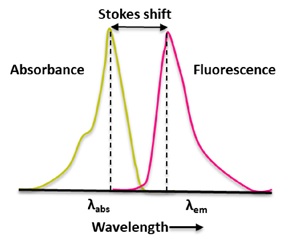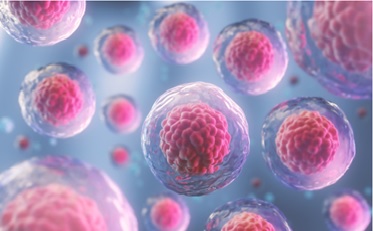Anti-Stokes Fluorescence Technology
SolCold – Anti-Stokes Fluorescence Technology Israeli startup SolCold develops a surface modification innovation, based on a nano filter and an active cooling paint. Using anti-stokes fluorescence technology [1], SolCold strives to transform heat and radiation from the sun into a low-cost cooling system.
The Fluorescence Process
Fluorescence is the result of a three-stage process that occurs in certain molecules (generally polyaromatic hydrocarbons or heterocycles) called fluorophores or fluorescent dyes. A fluorescent probe is a fluorophore designed to respond to a specific stimulus or to localize within a specific region of a biological specimen. The process responsible for the fluorescence of fluorescent probes and other fluorophores is illustrated by the simple electronic-state.
Stage 1: Excitation
A photon of energy is supplied by an external source such as an incandescent lamp or a laser and absorbed by the [2] fluorophore, creating an excited electronic singlet state (S1'). This process distinguishes fluorescence from chemiluminescence, in which the excited state is populated by a chemical reaction.
Stage 2: Excited-State Lifetime
The excited state exists for a finite time (typically 1–10 nanoseconds). During this time, the fluorophore undergoes conformational changes and is also subject to a multitude of possible interactions with its molecular environment. These processes have two important consequences. First, the energy of S1' is partially dissipated, yielding a relaxed singlet excited state (S1) from which fluorescence emission originates. Second, not all the molecules initially excited by absorption return to the [3] ground state (S0) by fluorescence emission. Other processes such as collisional quenching, fluorescence resonance energy transfer (FRET) (Fluorescence Resonance Energy Transfer (FRET)—Note 1.2) and intersystem crossing (see below) may also depopulate S1. The fluorescence quantum yield, which is the ratio of the number of fluorescence photons emitted to the number of photons absorbed, is a measure of the relative extent to which these processes occur.
Stage 3: Fluorescence Emission
A photon of energy hem is emitted, returning the fluorophore to its ground state S0. Due to energy dissipation during the excited-state lifetime, the energy of this photon is lower, and therefore of longer wavelength, than the excitation photon hex. The difference in energy or wavelength represented by (hex – hem) is called the Stokes shift. The Stokes shift is fundamental to the sensitivity of fluorescence techniques because it allows emission photons to be detected against a low background [4], isolated from excitation photons. In contrast, absorption spectrophotometry requires measurement of transmitted light relative to high incident light levels at the same wavelength.
Fluorescence Spectra
The entire fluorescence process is cyclical. Unless the fluorophore is irreversibly destroyed in the excited state (an important phenomenon known as photobleaching, see below), the same fluorophore can be repeatedly excited and detected. The fact that a single fluorophore can generate many thousands of detectable photons is fundamental to the high sensitivity of fluorescence detection techniques. For polyatomic molecules in solution, the discrete electronic transitions represented by [5] hex and hem in are replaced by rather broad energy spectra called the fluorescence excitation spectrum and fluorescence emission spectrum, respectively. The bandwidths of these spectra are parameters of particular importance for applications in which two or more different fluorophores are simultaneously detected. The fluorescence excitation spectrum of a single fluorophore species in dilute solution is usually identical to its absorption spectrum the above figure1.

Figure 1. Anti-stock Flourescence.
References:
- www.prnewswire.com/news-releases/lygenesis-announces-four-peer-reviewed-publication.
- https://www.lygenesis.com/news
- https://www.prnewswire.com/news-releases/lygenesis-announces-four-peer.
- https://www.biospace.com/article/releases/lygenesis-announces-four
- https://finance.yahoo.com/news/lygenesis-receives-fda-clearance-begin
Cite this article:
Vinotha D (2021), Anti stokes Flourescence, AnaTechMaz pp. 15















